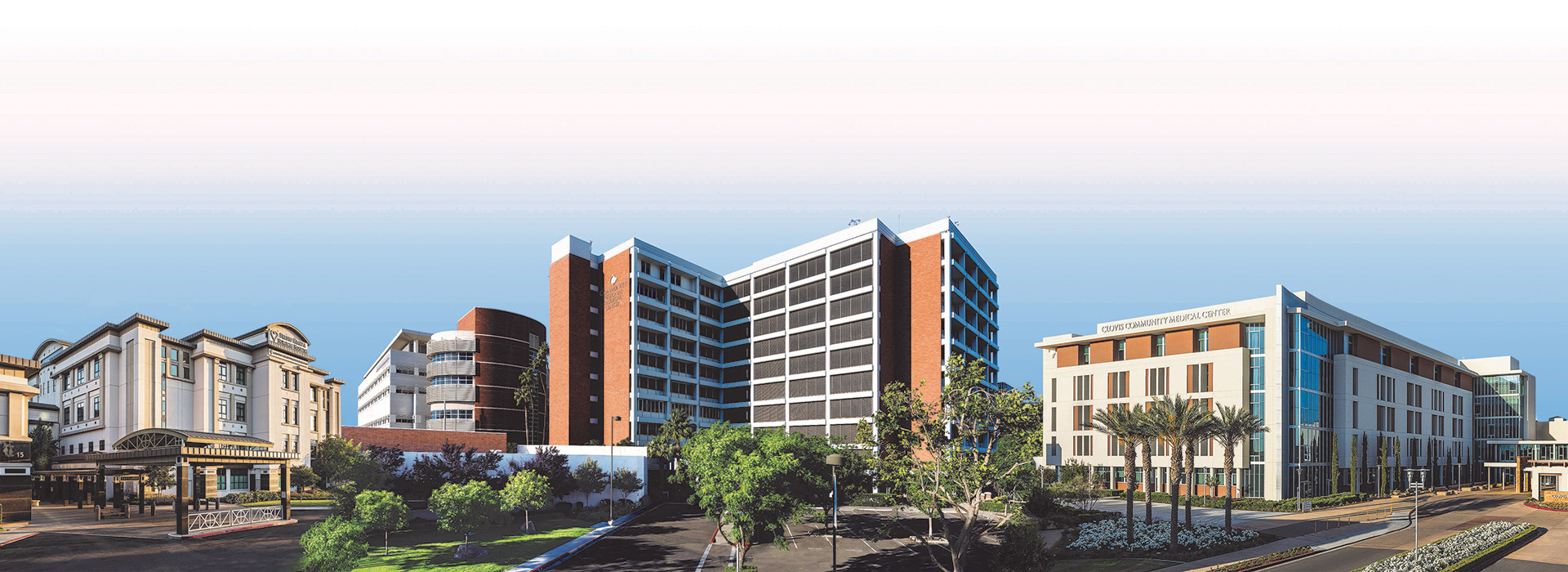 Both Community Regional Medical Center and Clovis Community Medical Center were recently named to the top tier (Superior Performance) of Cal Hospital Compare’s “Opioid Honor Roll.” The Opioid Honor Roll recognizes hospitals for helping patients with addictions and reducing the routine use of opioids in treatment.
Both Community Regional Medical Center and Clovis Community Medical Center were recently named to the top tier (Superior Performance) of Cal Hospital Compare’s “Opioid Honor Roll.” The Opioid Honor Roll recognizes hospitals for helping patients with addictions and reducing the routine use of opioids in treatment.
“We were thrilled to hear both hospitals got top tier,” said Dr. Rais Vohra, emergency medicine physician with Community Regional and lead of Bridge Program, of the award from the statewide hospital assessment task force. “This is really a big deal.”
During 2021, 841 patients were treated for all kinds of overdoses, including opioid overdose, at Community Regional, and 445 were treated for overdoses at Clovis Community. Since the Bridge Program launched, substance use navigators have helped more than 1,450 patients with addictions at both hospitals.
Dr. Vohra, who helped establish the Bridge Program at Community, said careful monitoring of opioids is now routine. “Before we start someone on opioids, we pause and ask ‘What’s the indication to use this?’ And we’re doing our best to get people to wean off opioids if at all possible before they leave the hospital.”
Community was an early leader in battling opioid addiction
In 2019, the California Department of Health Care Services funded hospitals to offer opioid withdrawal medication and connect patients to substance abuse recovery programs. Community Regional was one of the 53 initial Bridge sites in the state.
The success of the Bridge Program led the state to commit another $20 million in late 2020 to expand the program to 212 hospitals statewide and treat patients with other substance use disorders like alcohol, cocaine and methamphetamine addictions. California estimates cost savings created by the Bridge Program at $65,000 for each patient directed into addiction recovery.
“Even in the middle of a pandemic, the State of California was committed to ending substance use disorder,” said Dr. Vohra, a UCSF Fresno professor of emergency medicine and clinical pharmacy who sees patients at Community Regional. He’s also been the Fresno County Public Health Officer since COVID-19 hit.
How the Bridge Program works
Anyone struggling with opioid addiction can walk into Community’s two largest hospital emergency departments for relief from cravings and withdrawal symptoms – and help getting into an addiction recovery program.
The grant-funded Bridge Program has doctors and substance use navigators dedicated to providing support, counseling and the medication Suboxone, which safely controls withdrawals and helps patients stay in recovery from opioid use disorder.
“Our Bridge Program really helps connect people immediately to the medication that helps them with opioid use disorder, and then also the follow up so that they have an appointment and a place to go after they leave our hospital or emergency department,” explained Dr. Vohra.
Suboxone, also known as buprenorphine, is like a miracle drug. Dr. Vohra explained, “We see the effects in like five minutes and the patient is a transformed individual. It's not like you have to wait three weeks the way that you do with antidepressants to see a change. You can tell right away that this is really working and that the patient feels markedly better … you're starting this person's life over. It's like a reboot for them. So to me that's really fulfilling and rewarding to be able to offer something like this.”
 More doctors are joining the fight against opioid addiction
More doctors are joining the fight against opioid addiction
When Community’s Bridge Program started, most patients were identified in the emergency room. Now, as more physicians and nurses have become familiar with Suboxone's effectiveness, Dr. Vohra said about half of patients are referred for treatment from labor and delivery or other floors in the hospitals.
“We now have four other physicians – two from internal medicine and two from obstetrics – who are helping with the Bridge Program and taking calls and teaching their colleagues. It shows our program is growing,” said Dr. Vohra.
The U.S. Department of Health and Human Services has also made it easier for doctors to get certified to prescribe Suboxone, or buprenorphine, with an “X waiver” that takes minutes to sign up for. “Doctors used to have to take like an eight-hour course just to be able to prescribe this single medication which is much safer than any opioid you can prescribe easily,” Dr. Vohra.
“That's a source of frustration for me, because we've constructed this system over decades, which just works against addiction in so many ways.”
He’s urging more of his colleagues to apply for an X-waiver to help fight an increasing drug addiction problem in the Valley.
Overdoses and addiction rose during the pandemic
“Everything got worse with COVID-19. People’s mental health got worse,” Dr. Vohra explained. “People just felt so much overwhelming anxiety from all the bad news and stress of the pandemic, that unfortunately a lot of them resorted to using drugs to cope.”
During 2020 as drug use increased, Community added a program to distribute Naloxone, or Narcan, and train people how to use the nasal spray form to save people having opioid overdoses. Last year Community Regional distributed the fourth highest number of free Narcan kits in California.
In a region with a shortage of mental health resources, the Bridge Program is a lifeline for many. “We don’t have a really big safety net for mental health and drug use,” Dr. Vohra said. “And so when you don’t have a real safety net, everyone goes to the ER. And the emergency department tries to stabilize these folks as best as we can with our very limited resources.”
Before widely available suboxone and support from the Bridge Program, emergency physicians would have to refer out to addiction recovery programs. “So before we had this program, we were asking patients to go down the street and try to navigate this labyrinth of bureaucracy. And while you’re in withdrawal that is so, so hard and almost cruel to ask people to do that,” Dr. Vohra empathized.
He says those experiencing withdrawal from opioids are essentially having a seizure. “So whenever someone's inactive opioid withdrawal, I tell my (UCSF Fresno medical) residents this person is having an active seizure,” Dr. Vohra continued. “And you don't tell a person with an active seizure, ‘Hey, good luck to you. There's a neurology clinic down the street. You need to go make an appointment there.’ You would never do that to someone having an active seizure.”
Dr. Vohra added “That’s just not at all acceptable. So what we do now is stabilize the person in the ER and start them on a temporary prescription of suboxone and then pass them off to an expert who can continue their care … That's the real innovation ̶ to recognize that opioid withdrawal is an emergency, and it deserves to be treated like it.”




.jpg)


